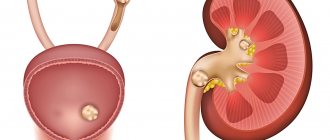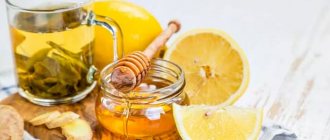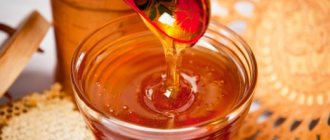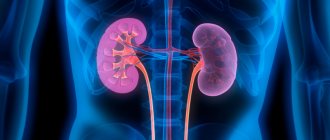Composition of a medicinal plant
The benefits of chamomile are due to its unique composition. The plant includes a whole complex of important chemical components that give it miraculous properties. Beneficial substances include essential oils, coumarin, and polysaccharides. Chamomile contains phytosterol and fatty acids.
The plant also contains many valuable components - flavonoids. These include apigenin, quercetin, luteolin. These substances give the plant antibacterial characteristics. Thanks to the combination of these components, chamomile has pronounced antimicrobial and antiviral properties.
Chemical compounds of chamomile
Chamomile contains a large group of therapeutically interesting active classes of compounds. The most important are sesquiterpenes, flavonoids, coumarins and polyacetylenes.
Coumarins are represented by herniarin, umbelliferone and other minor compounds such as (Z) - and (E) -2-β-d-glucopyranosyloxy-4-methoxycinnamic acid.
Chamomile also contains chlorogenic and caffeic acid, apigenin, apigenin-7-O-glucoside, luteolin and luteolin-7-O-glucoside, quercetin, rutin and naringenin.
More than 120 chemical components have been identified in chamomile flowers as secondary metabolites. These are 28 terpenoids, 36 flavonoids and 52 additional compounds with potential pharmacological activity.
For example, α-bisabolol and cyclic esters are antimicrobial, umbelliferone exhibits a fungistatic effect. Chamazulene is an effective antiseptic (read here).
How to properly store collected flowers
Medicinal raw materials can be prepared independently or purchased at a pharmacy. If you want to prepare the plant yourself, you should consider important recommendations:
- Flowers should be collected exclusively in dry weather. This must be done in an environmentally safe place.
- The raw materials need to be thoroughly sorted, removing grass, debris, and soil from it.
- Only high-quality flowers need to be dried.
- They need to be placed in a well-ventilated area or under a canopy.
- The plant should not be dried in direct sunlight.
- It is quite possible to use an electric dryer. However, the temperature should be set to no more than +40 degrees.
- Raw materials should be turned over periodically. This will help avoid rotting processes.
- Only well-dried raw materials can be packaged. The prepared flowers are easily rubbed in your hands.
- It is recommended to store chamomile in cardboard packages. This should be done in a well-ventilated area.
If you collect flowers incorrectly or violate the drying rules, you will not be able to achieve good results. Such raw materials lose their beneficial properties and do not benefit the body.
How to prepare chamomile
At the pharmacy you can buy ready-made chamomile tea in bulk or in bags. This product is easy to brew, since it already contains the correct dose per glass of water. But it’s more pleasant to prepare fragrant flowers yourself. Not every variety of chamomile is suitable for this, but only the pharmaceutical variety, which can be distinguished by its pronounced characteristic smell.
Chamomile is a branched plant up to 50-60 cm high with basket-shaped inflorescences no more than 25 mm in diameter. The stem of the plant is bare, there are almost no leaves on it. This feature also makes it easy to distinguish the pharmaceutical grade from others. Only plant inflorescences that have fully blossomed are harvested, plucking them by hand in dry sunny weather.
Dry in a ventilated area for 3-4 days. Store in linen bags in a dry place for about a year.
Useful action
Chamomile has a rich composition, which is why it has a complex effect on all organs and systems. The plant has a minimum of side effects. It can be used to treat children.
Thanks to the use of a medicinal plant, it is possible to achieve a number of effects:
- strengthen the immune system;
- reduce blood sugar levels;
- cope with the increased activity of harmful bacteria;
- normalize microflora in the digestive system;
- cope with fermentation processes, avoid flatulence;
- reduce inflammation in the gastrointestinal tract and urinary tract;
- cope with spasms;
- facilitate the removal of mucus;
- reduce headaches;
- cope with sore throat due to tonsillitis, pharyngitis, dry cough and other diseases
- nasopharynx and respiratory organs;
- reduce irritability;
- cope with dermatological pathologies;
- achieve a moderate bactericidal effect when used externally or internally;
- get a slight diuretic effect.
The plant can be used as the main ingredient in beneficial herbal remedies. Flowers can also be the main component of preparations for the treatment and prevention of many pathologies.
Herbal decoctions can be used to combat glomerulonephritis, urolithiasis, and urethritis. They are also suitable for eliminating cystitis, sexual dysfunction, and pyelonephritis.
Chamomile tea is used to prevent relapses after eliminating inflammatory processes in the urinary tract. It is worth considering that it is not recommended to use the product during pregnancy. It provokes increased hormone production. There is also a risk of problems with bearing a child.
Decoctions can be applied externally or used internally. They help treat diseases of the kidneys, urethra and genitourinary system. Chamomile has a beneficial effect on different parts of the body - from the respiratory system to the digestive system.
Unique properties of chamomile
Chamomile is rich in flavonoids, coumarins, fatty acids, minerals, valuable essential oils, choline, and salicylic acid. Its effect on the body is as follows:
- strengthening the immune system;
- relief of spasms and pain;
- reduction of inflammatory processes;
- stopping bleeding;
- normalization of intestinal microflora;
- suppression of the activity of pathogenic bacteria;
- excretion of excess fluid through urine and sweat;
- reducing the intensity of allergic reactions;
- improvement of psycho-emotional state;
- decrease in blood sugar levels.
Chamomile is often used for diseases of the kidneys and urinary tract (separately or as part of complex therapy).
The use of chamomile for kidney and urinary tract diseases
Using a medicinal plant at the first signs of an inflammatory process helps to achieve excellent results. If an advanced form of the disease is observed, it will not be possible to cope with folk remedies. In such a situation, it will not be possible to do without antibiotics.
Before using chamomile to treat kidney pathologies, you should consult your doctor. When using herbal remedies, you need to take into account contraindications, general health, and the severity of the disease.
It is worth starting treatment with the use of formulations based on one ingredient. Subsequently, multi-component charges can be used. You need to use herbal remedies for a long time.
Be sure to take breaks between courses. The doctor must select the timing individually. In acute forms of the disease with complex symptoms, plant materials cannot be the basis of therapy.
Advanced forms of pathologies of the urinary system often occur when systemic medications are stopped. It is worth considering that without antibacterial agents it will not be possible to cope with pathogenic microflora.
Harm and contraindications
Chamomile tea is a leader among other medicinal drinks of plant origin. It was described by ancient healers, considering it one of the strongest natural medicines. In addition to its benefits, it has a minimum of contraindications.
Harm from chamomile tea may occur in the following cases:
- if you are allergic to the plant;
- with frequent use in large quantities;
- for large stones in the kidneys or gall bladder.
For some, tea causes indigestion and even diarrhea. It should not be taken at the same time as blood thinners or diuretics. Contraindications apply to people who systematically use sedatives and sedatives; chamomile enhances their effect. Otherwise, the plant does not have serious negative effects on human well-being.
Recipes for effective herbal remedies
To cope with kidney pathologies, you can use effective recipes:
- Mix 3 large spoons of chamomile flowers, calendula, lingonberry leaves, yarrow, St. John's wort. Add 1 liter of boiling water to 2 tablespoons of the mixture, boil and leave for half an hour. Drink 4 times a day. Single dose – 100 ml. This remedy successfully copes with cystitis.
- Take 1 tablespoon of chamomile flowers and pour 250 ml of boiling water. Mix everything thoroughly and cover. After half an hour, the healing drink can be consumed. The drug successfully copes with pyelonephritis. To do this, you need to drink 25 ml of tea 3 times a day. This should be done before meals.
- Take 15 g of chamomile and calendula flowers, licorice root, plantain leaves, add 10 g of bearberry and horsetail. Also add 20 g of kidney tea. Mix the ingredients. Take 4 dessert spoons of the mixture and pour 1 liter of boiling water. Leave the composition for 4 hours and strain. Drink the product 2 times a day. Single dose – 50 ml. The composition has pronounced diuretic properties and successfully copes with the symptoms of inflammation.
- Take 1 tablespoon each of chamomile and yarrow flowers, add 2 times less hop cones and pour 450 ml of boiling water. Infuse the composition in a thermos for 45 minutes. Then strain the product and use it for microenemas. For 1 procedure, 50 ml of product will be enough. The same composition can be used to do douching. The product successfully copes with cystitis. The procedures should be carried out in the morning and evening. Therapy is carried out until signs of the disease disappear. After this, it is carried out for another 4-5 days.
- Take equal parts of chamomile, calendula and clover flowers. Add fireweed, marshmallow, St. John's wort and birch leaves. Take 2 tablespoons of the mixture and pour 0.5 liters of boiling water. Leave in a thermos for 2 hours. Drink before meals. This should be done no more than 4 times a day. Treatment should last 90 days.
- Take 5 tablespoons of chamomile and 2 liters of boiling water. Pour the raw materials into a bowl and add boiling water. Sit over the chamomile infusion and wrap yourself in a blanket. The steam bath should be taken for 20 minutes. This remedy successfully copes with inflammatory lesions of the bladder. It is recommended to be treated in this way for 1 week.
- Take 3 tablespoons of chamomile, corn silk, knotweed and bearberry. Mix all ingredients. Add 0.3 liters of boiling water to 3 dessert spoons of the collection and leave for 6 hours. Drink a third of a glass 1 hour after eating. This should be done 3-4 times a day. This remedy provides gentle dissolution of kidney stones, restores urination and removes salts.
Treatment of pyelonephritis with folk remedies: TOP 10 methods
Pyelonephritis is an inflammatory kidney disease, often chronic. Manifested by lower back pain, urinary dysfunction, and fever.
Treatment of pyelonephritis with folk remedies is symptomatic. Herbs and bee products relieve pain, reduce inflammation and stimulate the immune system.
With a course of using traditional medicine, it is possible to reduce the recovery period by half.
Cautions before use
Pyelonephritis is an infectious disease of the kidneys, accompanied by a violation of their functions. Treatment for the acute form of the disease is carried out with antimicrobial drugs - Cefotaxime, Moxifloxacin. The minimum course of antibiotics is 7-10 days. Additionally, it is recommended to drink herbal infusions and kidney teas, which have different pharmacological properties:
- anti-inflammatory;
- antiseptic;
- immunostimulating;
- diuretics.
Traditional medicine may only be taken on the advice of a urologist or nephrologist. They should not be taken if there is a decrease in glomerular filtration or decompensated renal failure.
Recipes for kidneys with pyelonephritis
Many antibiotics have nephrotoxic properties. They negatively affect the renal parenchyma and the renal system. Therefore, when taking pills for a long time, it is necessary to monitor the excretory function of the kidneys. To reduce the load on the detoxification organs, the course of treatment is supplemented with folk remedies.
Treatment methods for acute and chronic pyelonephritis depend on:
- severity of symptoms;
- age;
- associated complications.
To quickly restore kidney function, folk recipes are used. To achieve the desired effect, they are taken in courses from 2 weeks to 3 months.
Cowberry
Folk treatment of pyelonephritis during periods of exacerbation of inflammation is carried out with lingonberries. Unlike tablet diuretics, it does not remove magnesium and potassium ions from the body, which reduces the risk of side effects, such as muscle cramps.
Recipe with lingonberries for pyelonephritis:
- 10 g of leaves are poured into 300 ml of water;
- bring to a boil and cool;
- filter through cheesecloth.
Drink 30 ml of the chilled decoction half an hour before meals 4 times a day. The course of traditional treatment is 3 weeks.
The herbal remedy has a vasodilating effect, so it is not used for hypotension.
If a woman or man often experiences relapses of pyelonephritis, lingonberries can be mixed with cranberries in equal proportions. The herbal decoction is taken 1 glass per day for half a month.
Propolis and death
Bee products contain more than 100 bioactive substances. They have anti-inflammatory, antiseptic, healing and immunostimulating effects. Therefore, they are often used in the treatment of urological diseases caused by microbial infections.
Folk remedies for pyelonephritis from bee products:
- Alcohol tincture of death. Podmore is washed in running water and crushed in a blender. Fill with vodka in a ratio of 1:4. Leave in a cool, dark place for 3 weeks. Add 15-20 drops of tincture to 15 ml of water and drink after meals 3 times a day. The course of alternative treatment for pyelonephritis is 3-4 weeks.
- Water tincture of propolis. 10 g of raw materials are crushed with a knife and poured into a glass container. Pour 150 ml of boiling water, cover with a nylon lid and leave for 3-4 days. Add 1 tsp to warm tea. 3 times a day. Treat until symptoms of pyelonephritis disappear.
- Infusion of death. 2 tbsp. l. raw materials are poured with ½ liter of boiling water. Infuse in an enamel bowl for up to 3 hours. The filtered infusion is drunk 15 ml in the morning and evening for 2-3 weeks.
With systematic use of the tincture, kidney function is restored and local immunity is strengthened.
Mumiyo
Shilajit is a resin-like substance with an anti-inflammatory and restorative effect, which accelerates the healing of soft tissues and mucous membranes. It is often used as an immunostimulating and regenerating agent for kidney inflammation.
Folk recipes with mumiyo for chronic pyelonephritis:
- From honey. Altai honey is mixed with mumiyo in a 2:1 ratio. Add 1 tsp to tea. 3 times a day.
- From rosehip. 2 tbsp. l. Boil rose hips in ½ liter of water for 3 minutes. 5-7 g of mumiyo are dissolved in a filtered broth. Drink 1 glass of solution after dinner once a day.
Treatment of pyelonephritis in men with folk remedies takes from 4 to 8 weeks. If necessary, the course is repeated after a 3-week break.
Corn silk
In folk and Ayurvedic medicine, corn silk is used to treat chronic pyelonephritis. They have antispasmodic, analgesic and uroseptic effects.
Traditional methods of treating pyelonephritis:
- Tea. 1 tbsp. l. raw materials are poured into a thermos. Pour 1 cup of boiling water and cover with a lid. After half an hour, drink 2/3 cup of infusion. Drink tea up to 3 times a day 25 minutes before meals. The course of therapy ranges from 3 to 6 months.
- Decoction. 1 dessert spoon of hairs is chopped with a knife. Boil in 300 ml of water for 20 minutes. Leave for up to 2 hours and then filter through cheesecloth. Drink 30 ml every 3 hours for 2 weeks.
- Infusion. 10 g of dried stigmas are poured into 250 ml of boiling water. Keep covered for up to 40 minutes. After cooling, filter through a sieve or cheesecloth. Drink 100 ml 3 times a day for 3 weeks in a row.
Traditional recipes with corn silks are not used for calculous cholecystitis or diarrhea, as they have choleretic properties.
Chamomile
Pharmaceutical chamomile is the most effective herbal preparation against urological diseases. Contains essential oils, vitamins, bioflavonoids and organic acids that have antispasmodic, diuretic, tonic, decongestant, wound healing effects.
How to prepare chamomile for pyelonephritis:
- Recipe No. 1. 3 tbsp. l. raw materials are poured with 800 ml of water. Boil over low heat for 15-20 minutes. The cooled broth is filtered through cheesecloth. Add boiled water to obtain 1 liter of solution. Drink 150 ml 4 times a day for 1 month.
- Recipe No. 2. 5 g of flowers are poured into 200 ml of boiling water. Leave covered for up to 3 hours. Drink on an empty stomach in the morning and evening for 3 weeks.
Traditional recipes with chamomile are used only on the recommendation of a urologist. The plant is highly allergenic, so side effects are possible when taking herbal remedies - itching, abdominal pain, nettle fever.
Oats
For folk treatment of pyelonephritis, it is recommended to use oats. Unlike many medicinal herbs, it does not cause significant adverse reactions. With a course of taking the herbal remedy, inflammation is reduced and urination disorders are eliminated.
Traditional recipes with oats for urological diseases:
- Fermented milk drink. Add 10 g of chopped oats to 1 glass of low-fat kefir. Leave in a warm place for up to half an hour. Drink ½ glass 25 minutes before breakfast and dinner.
- Infusion. 2 tbsp. l. The grains are poured into a thermos and ½ liter of water is added. The filtered liquid is drunk throughout the day.
- Bath. Oat grains and stems are crushed. Pour half a kilo of raw materials into a 10-liter pan. Pour 5 liters of water and boil over low heat for 20 minutes. The filtered broth is poured into a bath of warm water. Take sitz baths for 10-15 minutes every other day for 1 month.
The course of treatment for pyelonephritis at home is 1-3 months. Urologists advise using the decoction to prevent exacerbations in the spring and autumn and during relapses of respiratory diseases.
Dill
The herb, seeds and roots of dill have diuretic, anti-inflammatory and tonic properties. The plant is included in 1/3 of folk recipes for infectious urological diseases.
Treatment of chronic pyelonephritis with folk remedies with dill:
- Recipe No. 1. Mix 1 tbsp. l. dill and sage seeds. Boil for 3 minutes in ½ liter of mineral water. Cool to 50°C and filter through cheesecloth. Drink 100 ml during the day. Alternative treatment takes from 2 to 4 weeks.
- Recipe No. 2. 50 g of plant seeds are poured with ½ liter of red wine. Boil over low heat for half an hour, then strain. Drink 50 ml 2 hours before bedtime for 2 weeks.
- Recipe No. 3. 15 g of chopped herbs are poured into a thermos and 300 ml of boiling water is poured. After 2 hours, filter through a sieve. Drink 100 ml 3 times a day for 2 weeks in a row.
Alcohol-based tinctures are not used during antibiotic therapy.
Rose hip
The fruits of the plant contain ascorbic acid, which has an immunostimulating effect on the body. Therefore, when fighting pyelonephritis, folk recipes with rose hips are often used. The course of treatment ranges from 2 weeks to 3-5 months.
How to prepare rose hips for pyelonephritis at home:
- Berry tea. The berries are chopped with a knife. 1 tbsp. l. raw materials are poured with ½ boiling water. Leave covered for half an hour. Drink 100-150 ml during the day.
- Decoction. 20 g of crushed fruits are boiled in 400 ml of mineral water for 15-20 minutes. Cool to 30°C, filter through gauze. Take 200 ml 25 minutes before meals in the morning and evening.
- Drink from roots. 15 g of roots are crushed in a blender. Boil in 1 glass of water for 3 minutes. The filtered broth is drunk 1/3 glass before meals 3 times a day.
Rosehip increases blood clotting. Therefore, folk treatment with decoctions and teas based on its fruits cannot be used if there is a tendency to blood clots.
Ginger
To eliminate pyelonephritis in women and men, herbal remedies with ginger are used. It has an immunostimulating, restorative, diuretic and healing effect. With a course of treatment, it is possible to reduce the recovery period by 35-40%.
Effective folk remedies with ginger for pyelonephritis:
- 1 root is passed through a meat grinder. Mix with the juice of half a large lemon. The gruel is poured with 200 ml of boiling water. After 40 minutes, the liquid is taken 5-10 ml 3 times a day 20 minutes before meals for 3 weeks.
- Add 1/5 tsp to a glass of fruit juice, fruit juice or tea. ginger powder. Drink the drink up to 3 times a day for 3 months.
- 1 chopped root mixed with ¼ tsp. cinnamon and 5 g granulated sugar. Pour the mixture with ½ liter of hot mineral water. Leave for 3-5 hours, then filter. Drink 200 ml in the morning on an empty stomach for 14 days.
Folk herbal remedies containing ginger have an irritating effect on the gastrointestinal mucosa. Therefore, they are not used to combat pyelonephritis in gastric ulcers.
Watermelon
Chronic pyelonephritis is difficult to treat. To normalize urination, use watermelon. It has a diuretic effect, therefore it prevents the stagnation of fluid in the kidneys and the proliferation of microbes in it.
Fruits and vegetables with a diuretic effect are used only for uncomplicated pyelonephritis and normal patency of the urinary tract.
Traditional treatment of kidney diseases with watermelon:
- Watermelon drink. Several slices of watermelon are crushed in a blender. Take 250 ml 1 hour after meals up to 5 times a day for 1 week in a row.
- Watermelon-cucumber juice. Freshly squeezed watermelon and cucumber juice are mixed in equal proportions. Take 150 ml 4 times a day 25 minutes before meals. The course of traditional treatment is 2 weeks.
- Tea. Watermelon rinds are dried in the oven. Grind in a blender to a powder state. 1 tbsp. l. raw materials are poured with 200 ml of boiling water. After 3 hours, drink instead of tea. Use the folk remedy up to 3 times a day for 2 weeks.
For long-term therapy of pyelonephritis, adhere to a watermelon diet. As part of the dietary program, all foods except watermelon and black bread are excluded from the diet for 1 week.
Kidney teas
Kidney tea is a diuretic herbal preparation that stimulates kidney function. For pyelonephritis, herbal remedies with anti-inflammatory, antispasmodic, uroseptic and immunostimulating effects are indicated. Therefore, they prefer teas with the following medicinal herbs:
- blue cornflower;
- horsetail;
- Birch buds;
- bearberry;
- dog-rose fruit;
- marshmallow root;
- goose cinquefoil.
It is necessary to treat pyelonephritis with folk remedies under the supervision of a urologist. The choice of tea depends on the presence of dysuric disorders and kidney function. During periods of exacerbation, herbal collections are recommended:
- elderberry with rose hips, fennel fruits, bearberry, wild strawberries;
- yarrow with flax seeds, horsetail, nettle;
- lingonberries with goldenrod, black elderberry, dill, calendula flowers.
Traditional recipes for herbal teas:
- Urological collection No. 1. Lingonberry leaves, St. John's wort, anise fruits and tansy flowers are mixed in equal proportions. 20 g of the mixture is steamed with 1 liter of boiling water. Leave in a thermos for 8-10 hours, then filter. Drink ½ glass up to four times a day for 1 week in a row.
- Urological collection No. 2. Mix 2 tbsp. l. bearberry leaves, crushed licorice roots, sage. Add 2 tsp. yarrow, oat straw. 10 g of collection is poured into ¼ liter of boiling water. Infuse in a container with the lid closed for 3 hours. Drink 150 ml of filtered tea 3 times a day half an hour before meals.
Herbal teas for the treatment of pyelonephritis can be purchased at the pharmacy. To speed up recovery, use Nephrotonic, Fitonephrol, Canephron.
Before using folk remedies for urolithiasis, you should consult a urologist.
Pyelonephritis is an inflammation of the kidneys caused by pathogens. Without proper therapy, it is complicated by cystitis, anuria, and renal failure. To speed up recovery and prevent unwanted consequences, they resort to traditional herbal treatment. They stimulate urination, destroy microbial flora, and accelerate the healing of renal parenchyma and mucosa.
Source: https://tden.ru/health/lechenie-pielonefrita-narodnymi-sredstvami
Chamomile to prevent inflammation
To avoid the occurrence of inflammatory processes, you need to follow these recommendations:
- Use a useful product for hygiene procedures morning and evening. Chamomile infusion can be used for toileting the genitals. You can also wash your face with it.
- Drink chamomile decoction immediately after hypothermia. To increase the effectiveness of the product, honey should be added to it. Preventive measures should be carried out within a week.
- Drink chamomile tea in courses. They should last 2 weeks. Then take a break for 1 month.
- To prevent cystitis, drink a mixture of chamomile and calendula flowers, lingonberry leaves, yarrow, and St. John's wort 2-3 times a year.
Benefits for men and women
The scope of application of chamomile tea extends to diseases of the female and male genitourinary system. What are the benefits of chamomile tea for women? It is drunk to relieve symptoms of severe PMS symptoms. These are pain in the abdomen and lower back, headache, weakness, depression and heavy menstrual flow.
Chamomile is also effective for any inflammatory diseases of the female genital organs. It is taken both internally and solutions for douching or medicinal baths are prepared on its basis.
Chamomile tea ice cubes are used to rub problem skin, to maintain its elasticity and youth. If you drink a glass of tea every morning on an empty stomach, you can significantly improve the condition of your skin, cope with rashes and a gray complexion.
What are the benefits of tea for men? Prostatitis is one of the most common diseases that affects men of different ages. Chamomile is an adjuvant treatment. Men are often prone to developing stomach diseases, so chamomile is also useful for prevention.
When should you take it?
Chamomile can be used in simple cases of inflammation of the kidneys and urinary tract. Today there are many effective means that help get good results.
Diuretic decoction with chamomile
To prepare it, you need to mix equal parts of lingonberry and rose hips, chamomile flowers, wild strawberry berries, tropic cudweed, oats, and plantain leaves.
Plant materials should be ground using a coffee grinder. Take 1 large spoon of the resulting composition and pour 250 ml of boiling water. Leave for 1 hour and strain. Use a third of a glass. It is recommended to do this 3 times a day.
Combined diuretic and fat-burning infusion
To get this composition, you need to take 2 tablespoons of chamomile, add to it 1 tablespoon each of hawthorn, mint and oregano, and half a spoon of dill seeds. Pour boiling water and leave for 12 hours.
Take 100 ml with meals. This should be done 3 times a day. The infusion has pronounced diuretic properties and has a beneficial effect on kidney function.
Adverse symptoms from overdose
When treating with chamomile decoction, you should definitely take breaks of 2-4 weeks. With prolonged therapy there is a risk of overdose symptoms. In such a situation, headaches, sleep disturbances, increased fatigue and irritability occur.
Any diuretics should be used in the morning. It is recommended to change the composition of herbal teas periodically. Otherwise, there is a high probability of developing addiction.
Chamomile tea in history
The history of the plant dates back at least to ancient Egypt. The original recognized record is recorded in the Ebers Medical Papyrus (1550 BC). The Egyptians valued this herb as a sacred gift of Ra (the Sun God), and revered it above all other herbs.
They used it to embalm the dead to escort them to the Land of the Dead. In fact, chemical analysis of the mummy of Pharaoh Ramses II (1100 BC) identified chamomile as the main herbal component in embalming oil.
Hieroglyphic records show that chamomile was also used for cosmetic purposes, especially by Egyptian noblewomen.
The Greeks and Romans were also fascinated by chamomile. The Greeks suggested the name “chamomile” through two terms “chamos” and “melos”, which means “ground apple”.
The Greek physician Dioscorides and the Roman naturalist Pliny suggested drinking chamomile tea for headaches, diseases of the liver, kidneys and bladder. It was also recommended for fever and female diseases.
During the European Dark Ages, the Anglo-Saxons called chamomile "mighten". Laknunga is a historical Anglo-Saxon manuscript in which it is mentioned as one of the "Nine Sacred Herbs". In those days, chamomile tea was drunk for insomnia, headaches, bloating, indigestion, skin diseases, gout, and rheumatism. The Vikings used chamomile in shampoos to further lighten their hair.
During the Middle Ages, chamomile was considered a therapeutic agent throughout Europe. During this period, Roman chamomile was introduced to Germany. Nicholas Culpeper, a 17th-century English herbalist, suggested chamomile as a natural remedy for treating digestive problems, fever, jaundice, pain, kidney stones, and to induce menstruation.
What happened next?
Throughout the Middle Ages, Christian monks collected various herbal formulas. They are credited with creating the Roman chamomile variety “Flore Pleno”. This variety is softer compared to Roman and German daisies.
There is also a version that the Latin name of chamomile was dedicated to the Virgin Mary. In fact, the name Matricaria was derived from the words "mater" and "Cara" (beloved mother). Using his fragile but strong nature, he became “patience in trouble.”
Chamomile is known to have been brought to North America by European immigrants in the 16th century. The rest, as they say, is history.
Over hundreds of years, this versatile herb has become one of the most used on the continent. Scientific research has not refuted its medicinal status, but, on the contrary, has confirmed its therapeutic properties.
Nowadays, many countries grow and import dried chamomile in various forms. But chamomile tea truly remains the most popular.
What are the benefits of chamomile tincture?
Chamomile infusions are suitable for internal and external use. Such products can be used in the form of enemas, lotions, and rinses. To make a healing composition, you can use the following methods:
- Cold. To do this, 8-10 small spoons of flowers should be mixed with 500 ml of cool water and left for 10 hours. The resulting product can be used for eye pathologies, for washing wounds and other injuries, for gargling and gargling. The product successfully copes with the symptoms of inflammation.
- Hot. Take 1 tablespoon of plant flowers and mix with 250 ml of boiling water. Leave to infuse for half an hour, then strain. Drink the infusion hot 3 times a day. A single dose is a quarter glass. The drug is taken for viral infections, headaches, stool disorders, and flatulence. It helps cope with spasms of the gastrointestinal tract.
It is worth considering that chamomile flowers should not be boiled. The resulting product will lose all healing properties. To preserve the maximum of valuable components, the composition should be prepared in a steam bath.
For inflammation of the respiratory tract
To cope with inflammatory lesions of the respiratory system, you need to take 1 small spoon of flowers and mix with 250 ml of boiling water. Then cool the infusion a little and strain. Use the product to rinse the nasal cavity for inflammation and gargle for tonsillitis and laryngitis.
For kidney diseases and chronic cystitis
For cystitis and pyelonephritis, you should take an infusion prepared from 2 small spoons of inflorescences and 500 ml of boiling water. It is recommended to leave the product for 1 hour, then strain.
Take 1 large spoon three times a day.
What does chamomile cure?
The plant helps with various diseases. Some mothers use the herb to treat dysbiosis and colic in the newborn. The plant is often used in folk medicine due to its medicinal properties. Healing herbs are used to treat diseases in gynecology and ophthalmology. Herbs are used to treat colds and skin rashes. The following describes diseases that can be cured with a healing drink.
Chamomile in gynecology
Women visit a gynecologist with problems related to inflammation of the female reproductive system. It can be caused by staphylococci, fungi, and tubercle bacilli. They enter a woman’s body through sexual intercourse or during hygiene procedures, gynecological examination or surgery (douching). It is recommended to use the plant for pain during menstruation and cystitis. Chamomile is also used for diseases of the eyes, gastrointestinal tract, skin, and colds - the medicinal properties and contraindications for these diseases are described below.
In ophthalmology
Chamomile is used to treat eye diseases: conjunctivitis, lacrimation, stye, inflammation. The plant is widely used in cosmetology: the herb is used to soothe tired, reddened eyelids. Folk recipes describe many chamomile ointments and compresses that relieve inflammation and burning after sunburn. The herb is used to wash boils, ulcers or purulent wounds.
Colds
The plant has anti-inflammatory, diaphoretic, and analgesic properties, which helps improve the patient's condition during a cold. The herb is used for inhalations and tinctures for bronchitis and tracheitis. The plant promotes expectoration, and essential oils have antiviral, antimicrobial, anti-inflammatory effects that help eliminate pathogenic organisms. The herb is used for sore throats and flu, and decoctions from the plant's baskets relieve sore throats.
Chamomile for the intestines
Chamomile flowers are taken for intestinal diseases. Use enemas or infusions to cleanse the intestines. For colitis, the components of the plant improve the functioning of the digestive tract, reduce the inflammatory process, and normalize the activity of the gallbladder. In addition, this medicinal herb:
- helps with diseases of the gastrointestinal tract;
- used to treat gastritis;
- improves the secretion of digestive glands;
- reduces fermentation processes in the body;
- eliminates pain.
Skin diseases
During adolescence, teenagers suffer from acne and pimples, which may not disappear from the skin of the face for a long time. One of the common uses of chamomile is masks, solutions for acne and pimples. Use of the plant for skin diseases for cosmetic effect:
- chamomile decoction - to cleanse the skin of the face and contaminated pores;
- chamomile steam baths - for rashes;
- chamomile oil – for eczema, dermatitis and diathesis.
Contraindications to the use of chamomile
Chamomile-based products should not be used in the following cases:
- pregnancy – the plant can cause miscarriage or premature birth; age less than 12 years;
- urolithiasis - in this case, chamomile can be used very carefully, after consulting your doctor;
- allergy;
- mental disorders.
Chamomile is often used to treat kidney pathologies. This product has a pronounced antiseptic and antibacterial effect. To achieve good results in the treatment of pathologies, it is necessary to choose the right remedy and follow the rules for its preparation.
X
How to make chamomile tea?
Probably the best known of all the benefits of tea is that it tastes great. It can be brewed in absolutely any chamomile: German, Roman or even wild variety. At the same time, pharmaceutical or German chamomile is the most powerful.
The easiest way to brew is to buy ready-made tea bags. You can also buy dried flowers and pour boiling water over them.
It is believed that the best tea is without leaves or stems. Therefore, if this point is important to you, you can grow and harvest the plant yourself.
It is better to choose chamomile flowers every morning. They are immersed in water for several minutes to remove dirt. And you can brew tea directly from fresh flowers.
Otherwise, you can dry them in a preheated oven at 200º C. When the flowers are completely dry, place them in a jar. This way they will be stored for 4 - 6 months, but only in a cool and dark place.
To make chamomile tea, simply place 5 flower heads in a cup and add hot water. Leave it to steep for 5 minutes and strain. Add honey or lemon if desired.
If you add ground ginger to tea, you can reduce discomfort from food and loss of appetite.
Scope of use for kidney diseases
A diuretic of plant origin is included in the complex treatment of both acute and chronic diseases of the urinary system.
Main indications for use:
For inflammatory diseases of an infectious nature (bacterial, viral, fungal), the use of medicinal herbs can speed up the release of the body from pathogens. Also, with these diseases, patients experience pain in the bladder and pain when urinating. The use of diuretic herbs, most of which also have anti-inflammatory and antimicrobial effects, alleviates the condition of patients with cystitis, prostatitis, and urethritis. For pyelonephritis, diuretic herbs are used as an addition to the main therapy for acute processes, for follow-up treatment, and to prevent the activation of inflammatory inflammation.
For chronic lesions of the glomeruli of the kidneys (glomerulonephritis), the use of diuretic herbs during the period of remission of the disease is indicated to prevent exacerbation.
Under the influence of diuretic herbs, not only does the amount of fluid in the body decrease, but also urine tests improve
With sand in the kidneys, the diuretic renal effect promotes the passage of small stones, reduces congestion in the kidneys, prevents the formation of new ones, as well as an increase in the size of previously formed stones. Along with diet (depending on the chemical composition of the sand), diuretic herbs are an effective method of preventing stone formation in the kidneys, including after surgical interventions to remove stones.
Diuretic herbs for the kidneys
Treatment for most kidney diseases takes a long time. Both traditional medicines and traditional medicine are used in therapy. The latter have advantages in the form of a milder effect, fewer side effects, and the possibility of long-term safe use. A special place is occupied by plants that enhance the secretion of urine by the kidneys. The list of diuretic herbs for the kidneys is extensive; herbal remedies have different mechanisms of action, effectiveness, and indications for use. The beginning of their use must be coordinated with the treating doctor, and carried out under medical supervision.
What are the contraindications?
Due to the direct contact of chamomile infusion with the prostate gland, the inflammatory process is effectively eliminated, since the infusion affects the affected areas and does not affect neighboring organs. Before using microenemas, you should consult your doctor, as there are a number of contraindications. Which include:
- haemorrhoids;
- sharp pain in the abdomen;
- dysbacteriosis;
- high body temperature.
Microclysters for hemorrhoids can aggravate the course of the disease, as a result of which hemorrhoids can increase in size and become very inflamed. Before using any folk remedy, you must undergo a medical examination to determine whether there are any contraindications. Treatment with chamomile enemas for prostatitis without a doctor’s prescription often provokes the development of complications.











